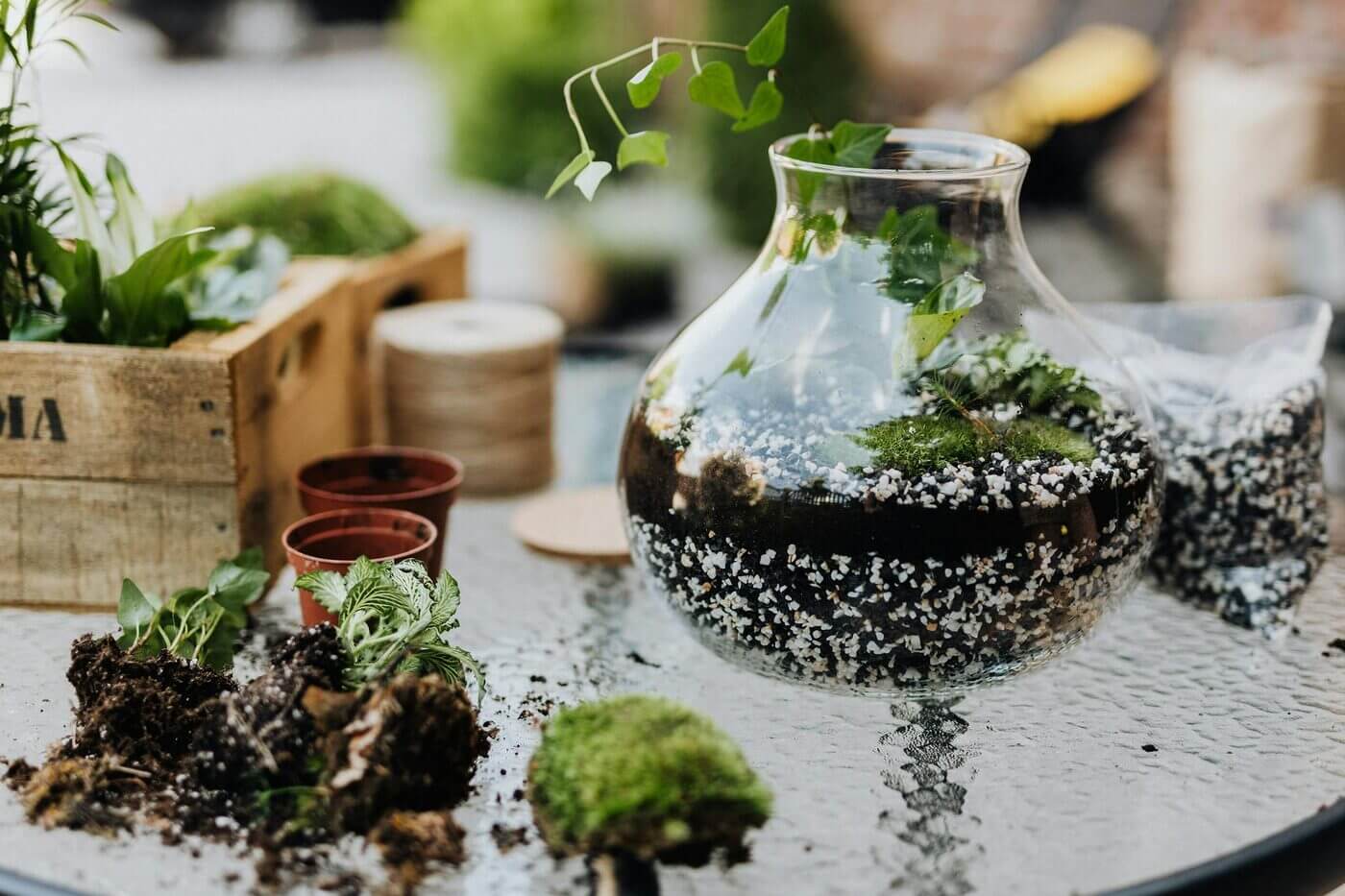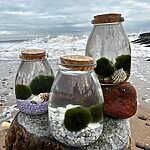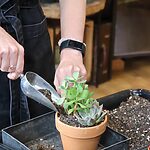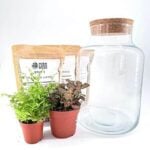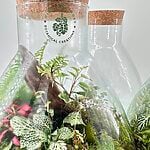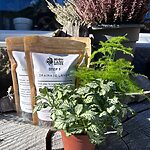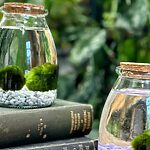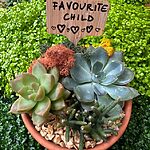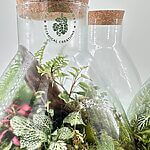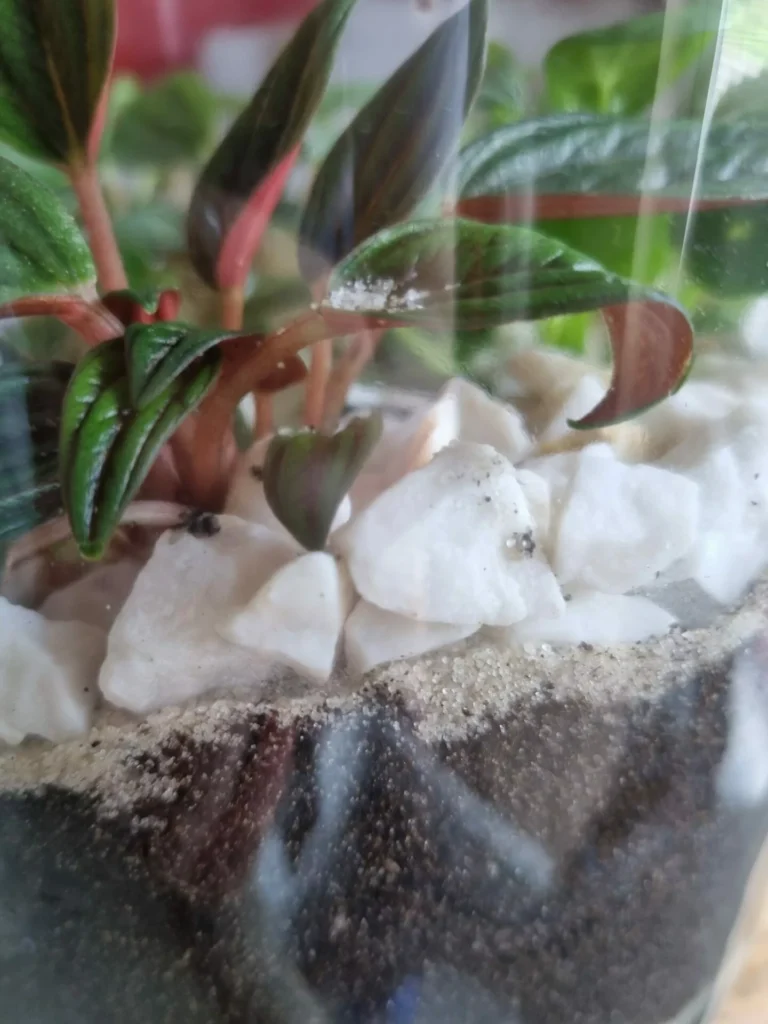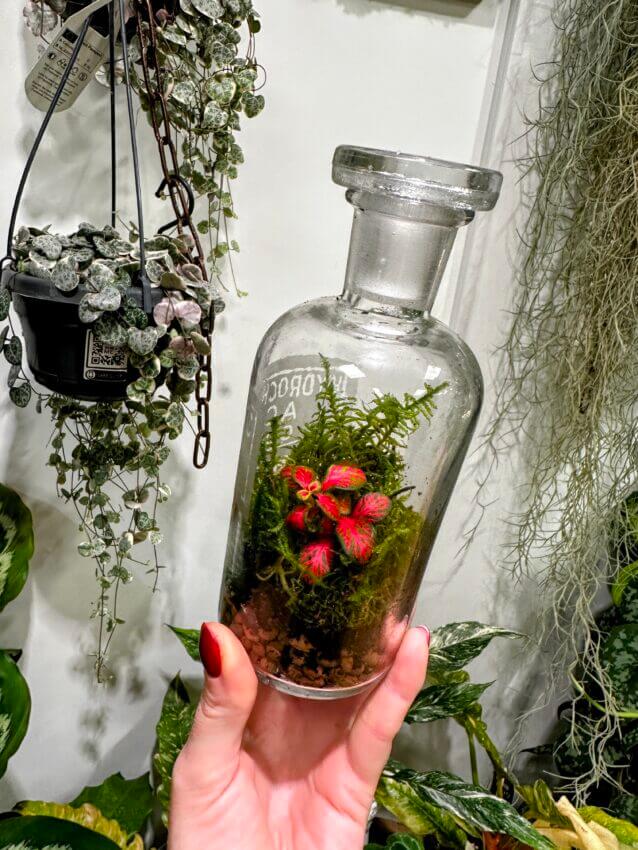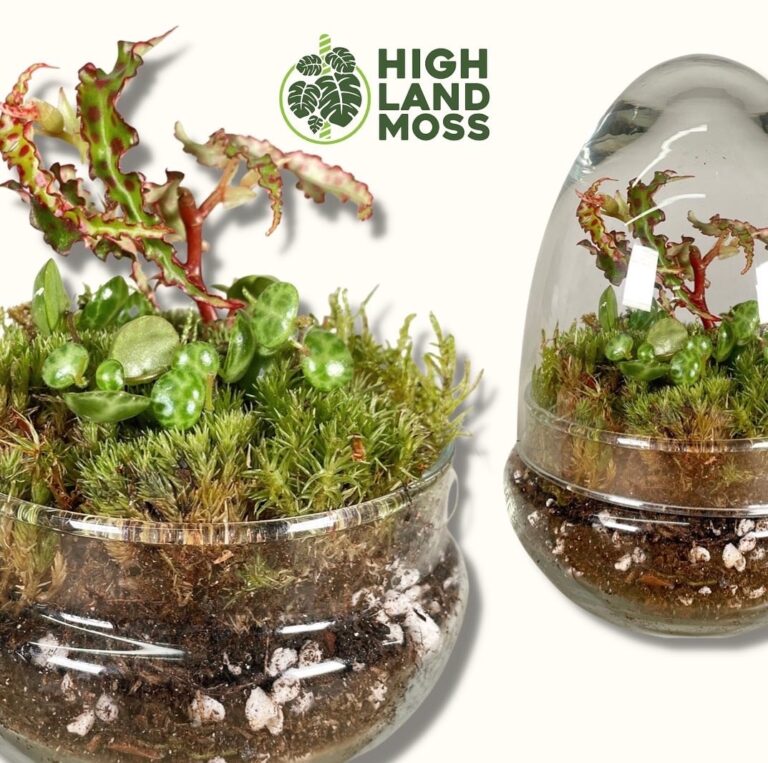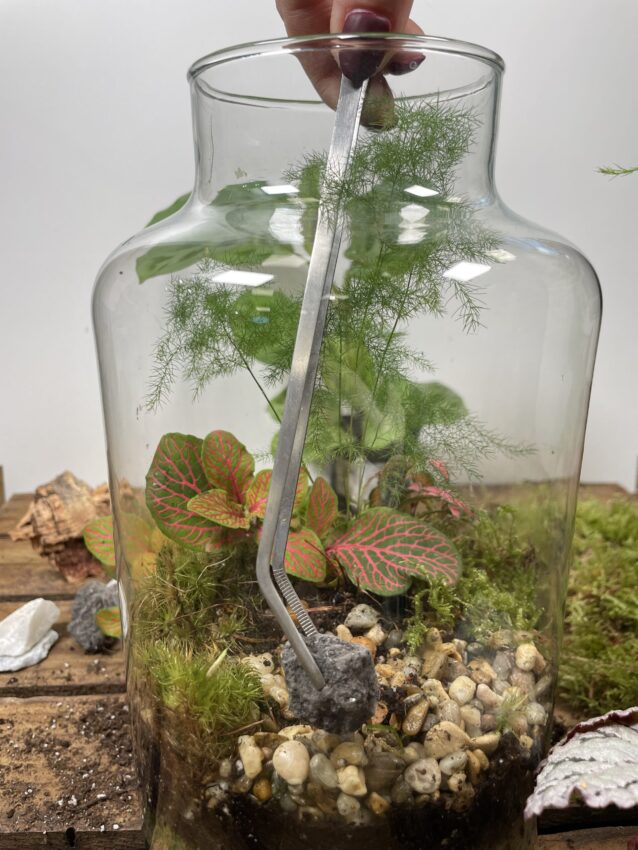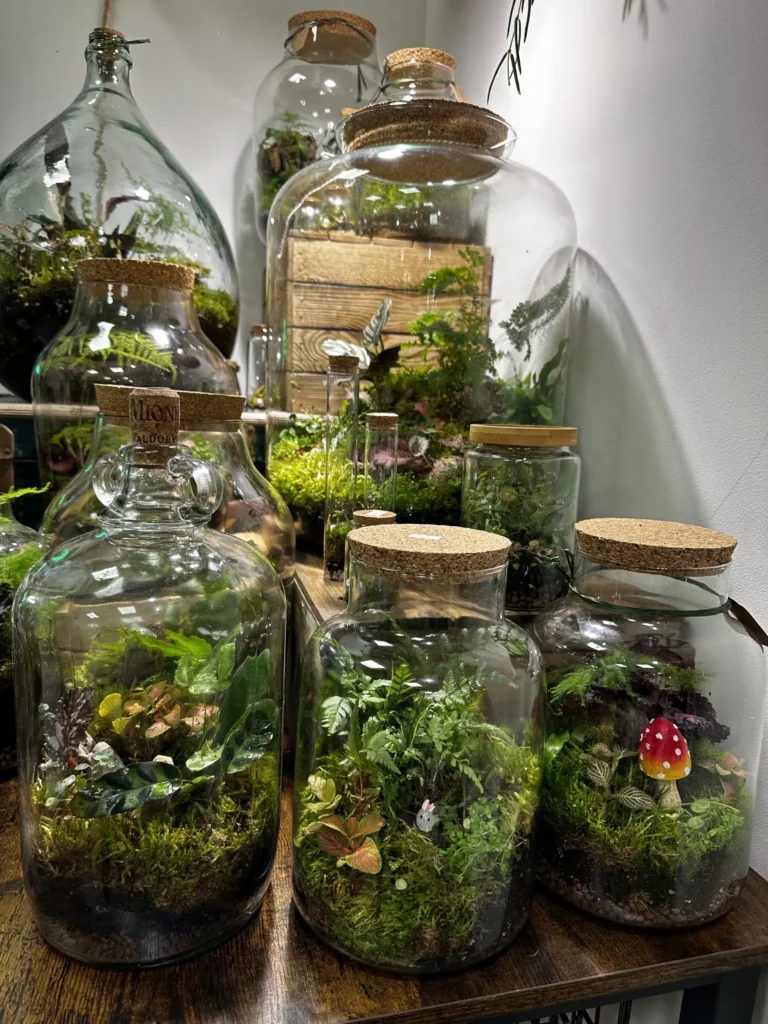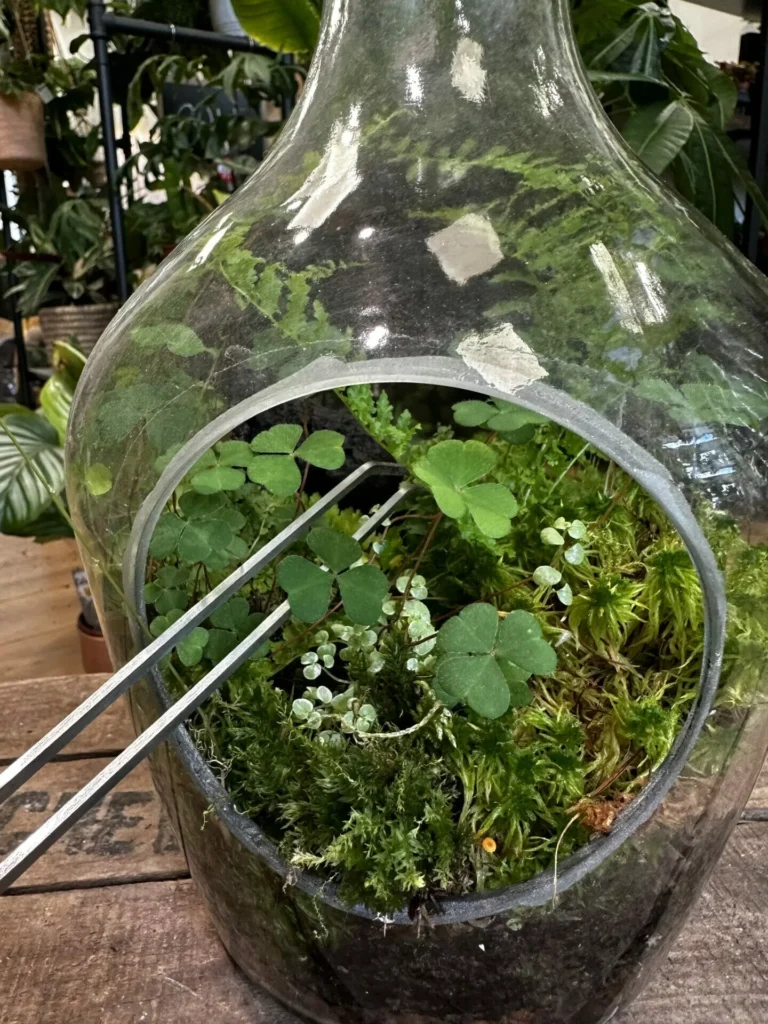Terrarium Common Issues and How to Fix Them
Terrariums are beautiful miniature ecosystems, but even the best setups can encounter problems. If your terrarium is foggy, plants are wilting, or mold appears, don’t worry! These issues are common and usually easy to fix. Here’s how to troubleshoot common terrarium issues.
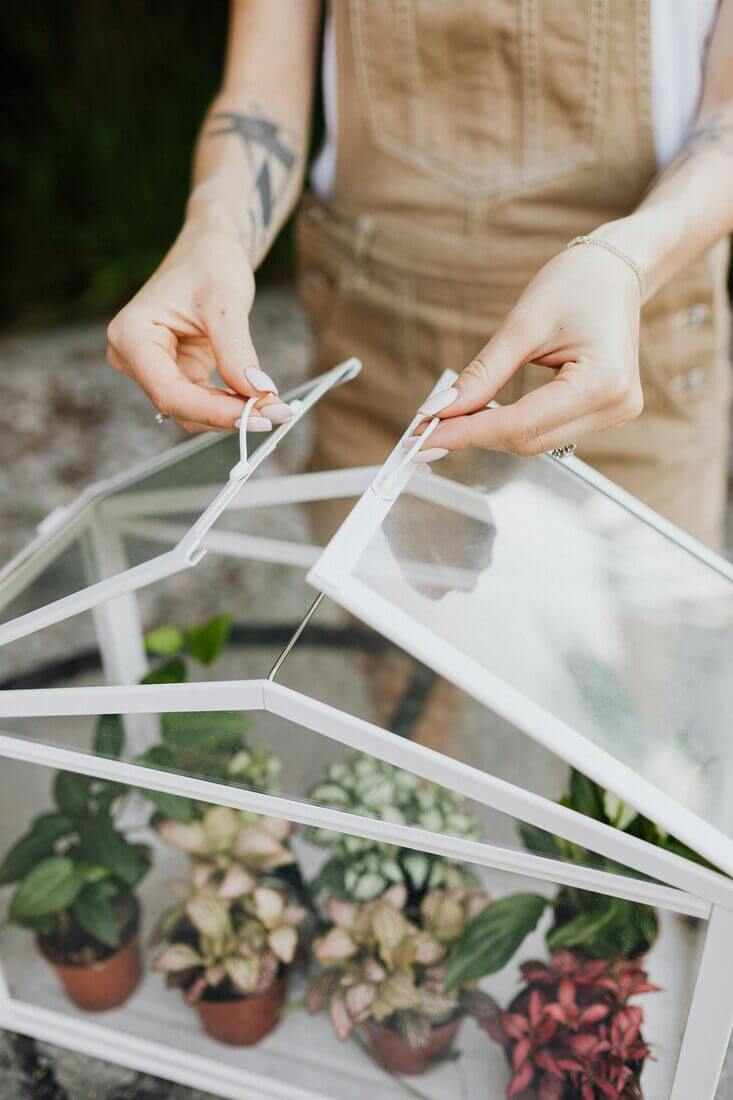
Why Is My Terrarium Foggy?
Foggy glass is a sign of high humidity, which is typical in closed terrariums but can become excessive. When condensation builds up, it can block light and affect plant health becoming terrarium common issues:
Solutions:
Ventilate the terrarium: Open the lid for a few hours or overnight to let some moisture escape.
Reduce watering: Overwatering often makes a terrarium too wet. Ensure you’re only watering when the substrate feels dry to the touch. Fully established terrarium do not require extra water.
Move it to a cooler location: Warm areas can increase evaporation and condensation. Place the terrarium in a spot with consistent, moderate temperatures.
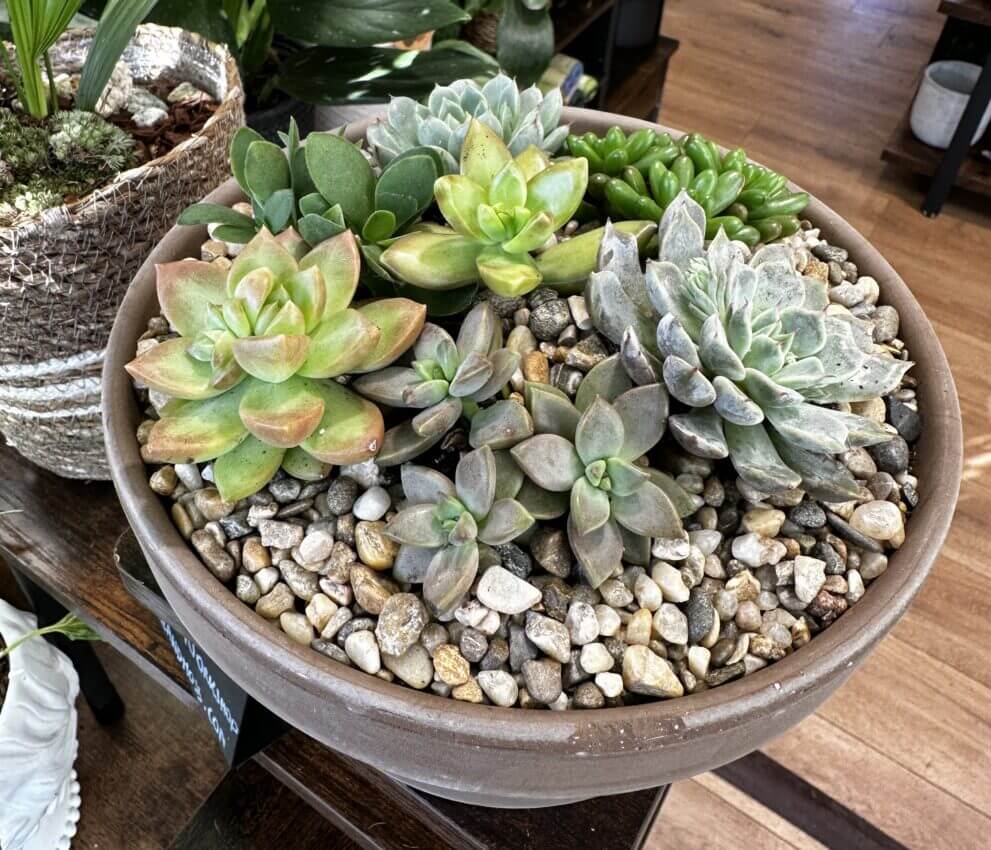
Why Are My Succulents Rotting in the Terrarium?
Succulents are not suitable for most closed terrariums due to the high humidity levels. If your succulents are rotting, it’s a sign of excess moisture.
Solutions:
Switch to tropical plants: Replace succulents with plants that thrive in humid environments, like ferns, Fittonia, or mosses.
Use an open terrarium: If you’re committed to using succulents, opt for an open terrarium design that allows better airflow and drier conditions.
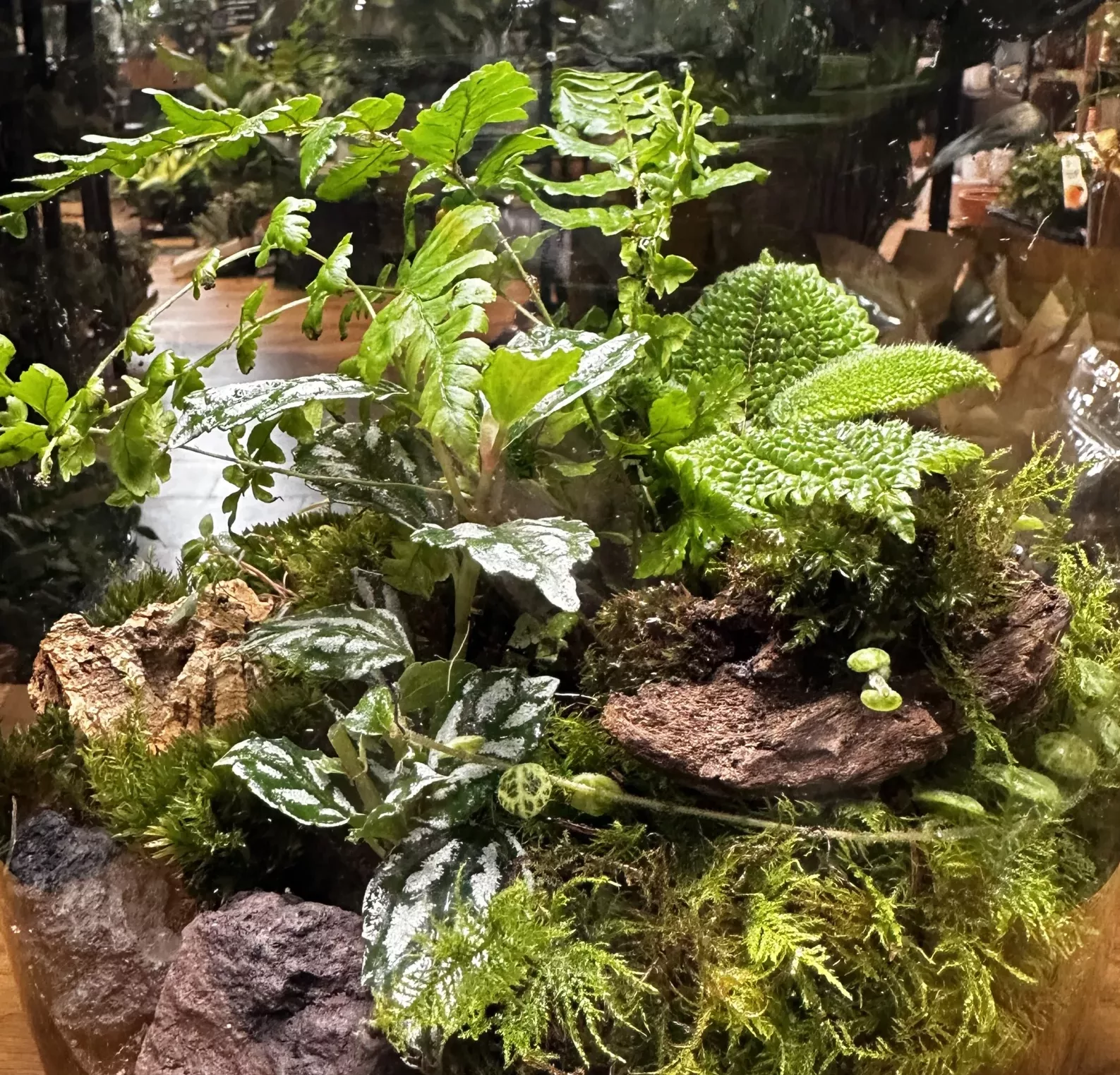
What Are Those Tiny White Dots in Terrarium Soil?
The tiny white dots in terrarium soil are likely mycelium or mycorrhizal fungi. These fungi are essential components of a healthy terrarium ecosystem. Mycelium acts as the vegetative part of fungi, breaking down organic material and enriching the soil with nutrients. Mycorrhizal fungi form symbiotic relationships with plant roots, helping plants absorb nutrients like phosphorus more effectively.
While these fungi are beneficial, you can remove them if they become unsightly:
Solutions:
Scoop out affected soil: Use a small spoon or tool to gently remove areas where fungi are visible. Add fresh, good-quality terrarium soil.
Reduce moisture: Excess water encourages fungal growth. Allow the topsoil to dry slightly between waterings.
Introduce springtails: These tiny insects feed on fungi, helping to keep their growth in check.
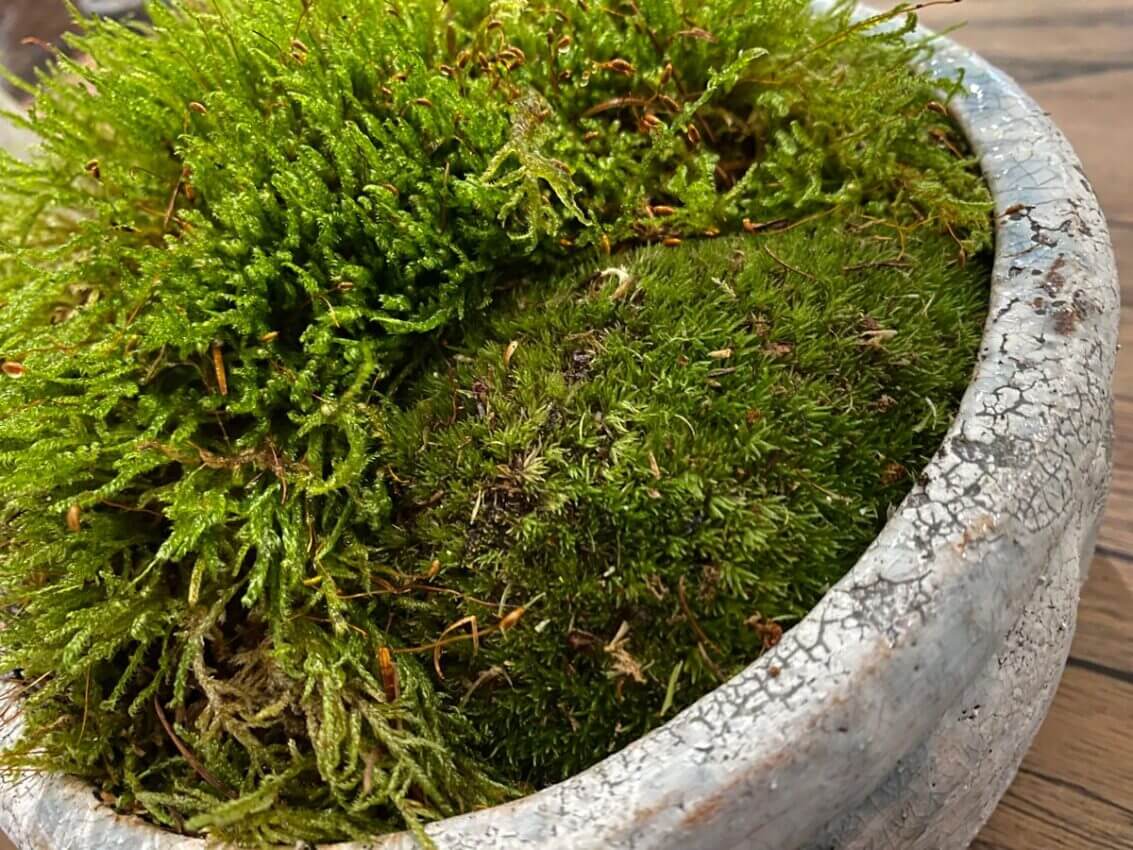
Why Is My Moss Turning Brown?
Moss turning brown usually indicates either too much water or not enough humidity.
Solutions:
Check watering habits: Overwatering can cause moss to become waterlogged and brown. Mist lightly instead of drenching and stop watering fully established terrariums.
Adjust light and humidity: Moss thrives in bright, indirect light and high humidity. Ensure your terrarium provides the right conditions.
Trim dead areas: Remove brown, dead moss to encourage new growth.
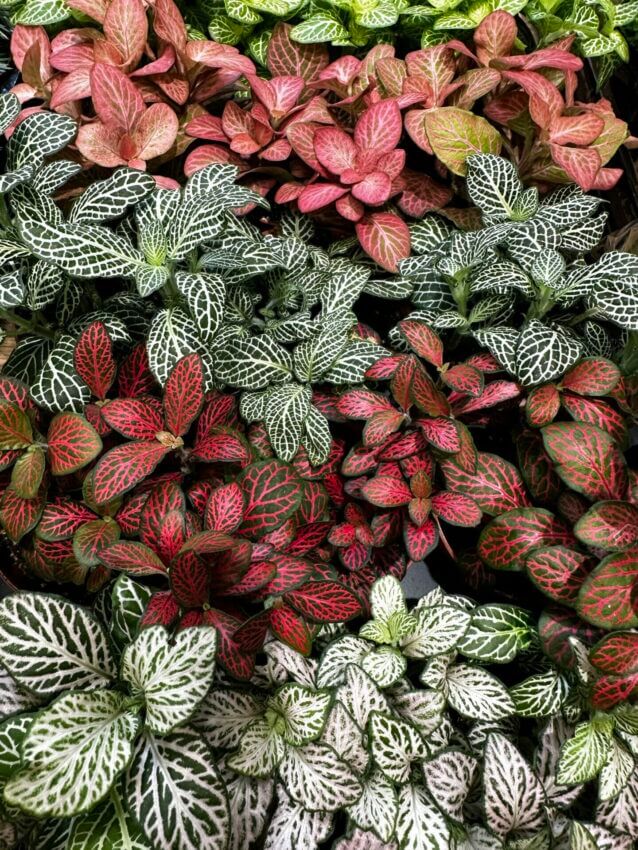
Why Are My Terrarium Plants Dying?
Wilting, yellowing, or browning plants in a terrarium can result from overwatering, poor light, or unsuitable plants. If you’re wondering, “Why are the plants in my terrarium dying?” here are some solutions:
Solutions:
Check watering habits: Overwatered terrariums are common. Most plants thrive in slightly moist but not soggy conditions. Fully established terrarium should not require extra water.
Assess light levels: Terrariums need bright, indirect light. Avoid direct sunlight, which can overheat the plants, or overly dark areas, which can cause them to decline.
Choose the right plants: If a plant is struggling, it may not be suitable for the terrarium’s conditions. Replace it with terrarium-friendly plants like ferns, mosses, or Fittonia.
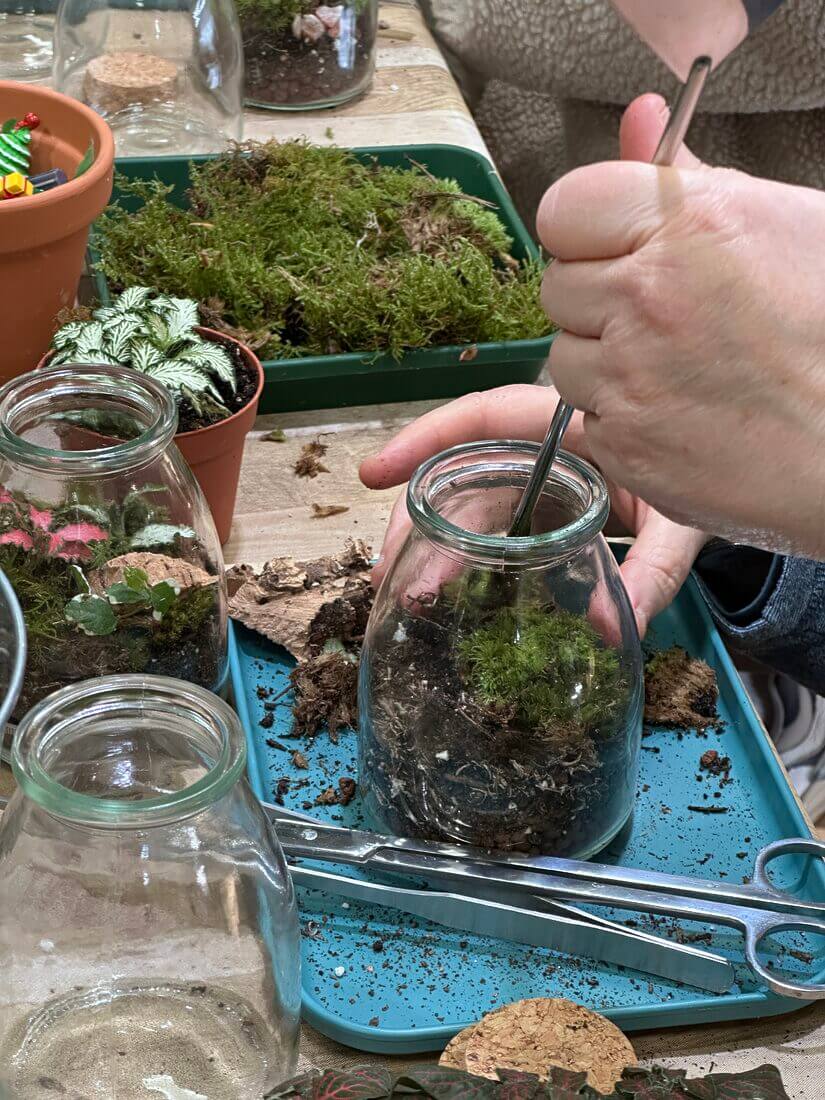
Why Is My Terrarium Soil Turning Green?
Green patches on the soil are usually algae growth, which thrives in moist, bright environments. If you’re wondering, “Is my terrarium too wet?” or “How do I fix overwatered terrarium soil?” algae may be a sign of excess moisture:
Solutions:
Reduce light exposure: Too much light encourages algae growth. Move the terrarium to an area with indirect light.
Control moisture levels: Ensure you’re not overwatering and the terrarium has proper drainage layers.
Add a barrier: A thin layer of decorative stones or sand can discourage algae growth on the soil surface.
Scrape off algae: Use a small tool to gently remove the green layer and replace the affected soil if necessary.
Introduce springtails: These tiny insects can help reduce algae by consuming organic material in the substrate.
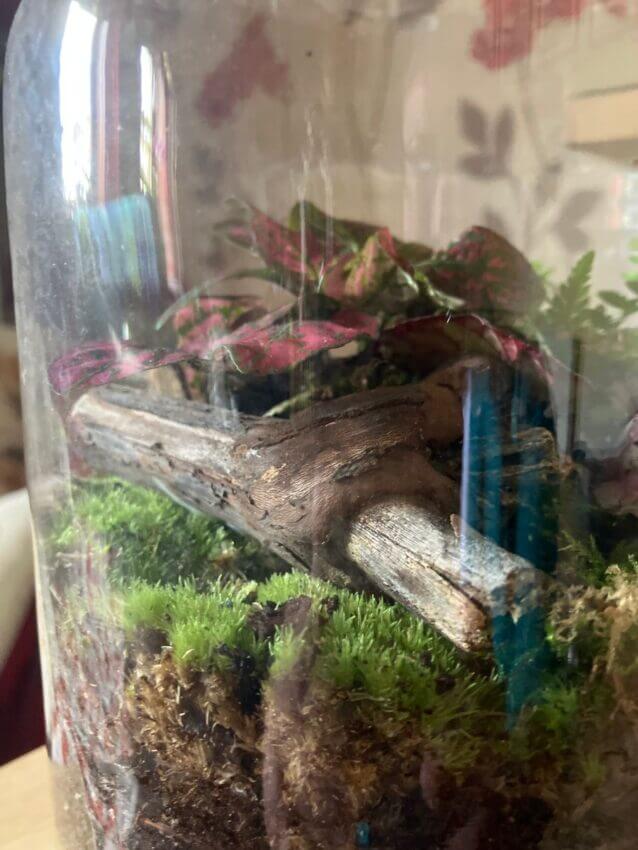
Why Is the Wood in My Terrarium Getting Moldy?
Wood collected from the wild or improperly treated wood can easily grow mold in a terrarium’s humid environment.
Solutions:
Treat the wood beforehand: Bake or boil wood pieces to sterilize them before adding them to your terrarium.
Introduce springtails and isopods: These organisms feed on mold and help maintain balance in the ecosystem.
Clean affected areas: Gently clean moldy wood with a damp cloth. You can use hydrogen peroxide 3% food grade solution instead of water.
Proper care and attention can resolve most common terrarium issues and keep your miniature garden thriving. Regular monitoring and maintenance go a long way in preventing problems before they escalate. Remember, every terrarium is a unique ecosystem, so adjustments may be necessary to suit its specific needs. If you have any more questions, please email contact@highlandmoss.com.
All terrarium components, moss, plants, springtails, isopods, tools, and containers you can browse here
With proper care and attention, you can resolve most terrarium issues and keep your miniature garden thriving. Regular monitoring and maintenance go a long way in preventing terrarium common issues before they escalate. Remember, every terrarium is a unique ecosystem, so adjustments may be necessary to suit its specific needs. If you have any more questions, please email contact@highlandmoss.com.
